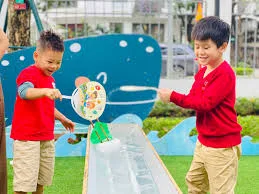-
×
 Boys and girls solid color vest, large size 8/14 years old 1 × $978.00
Boys and girls solid color vest, large size 8/14 years old 1 × $978.00 -
×
 H546 Newborn set-SS01_ 9/36m printed 1 × $456.00
H546 Newborn set-SS01_ 9/36m printed 1 × $456.00 -
×
 H549 Children's swimwear - SW01_2/12 BT 1 × $648.00
H549 Children's swimwear - SW01_2/12 BT 1 × $648.00
News
Beyond the Playground: A Deep Dive into Sustainable Kids’ Fashion for a Greener Tomorrow
As parents, we are intimately familiar with the relentless cycle of our children’s wardrobes. One day, a pair of trousers fits perfectly; the next, they’re hovering awkwardly above the ankles. A favourite t-shirt, cherished for months, is suddenly too snug across the shoulders. This rapid turnover results in piles of outgrown, often barely-worn, clothing. While it seems like a simple, inevitable part of parenthood, this constant churn is a microcosm of a much larger, more troubling issue: the staggering environmental and social cost of fast fashion.
The children’s apparel market is a behemoth, driven by rapid growth spurts, changing seasons, and tempting, low-cost trends. But the true price of that $5 cartoon-character t-shirt is paid by our planet’s resources, our over-burdened landfills, and the unseen workers in the global supply chain. The vibrant colours and playful prints often mask a reality of polluted waterways, pesticide-laden fields, and unethical labour practices.
This is where a crucial and empowering movement comes into focus: sustainable kids’ fashion. Far from being a niche or luxury concept, sustainable fashion is a conscious choice to dress our children in clothes that are kind to their skin, kind to the Earth, and kind to the people who make them. It’s about shifting our mindset from disposable to durable, from trend-driven to timeless.
This comprehensive guide will walk you through every aspect of sustainable kids’ fashion. We will uncover the hidden costs of conventional children’s clothing, decode the meaning behind eco-friendly labels, provide practical strategies for building a conscious and affordable wardrobe, and explore how these small choices can create a powerful ripple effect for a healthier, more equitable world. This is more than just a guide to buying clothes; it’s an invitation to weave a better future for the very children we are dressing.
Part 1: The Uncomfortable Truth – Why We Need Sustainable Kids’ Fashion
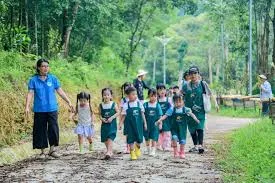
Before we can appreciate the solution, we must fully understand the problem. The journey of a conventional children’s garment, from a cotton seed to a closet, is fraught with environmental degradation and social concerns that are often invisible to the end consumer.
The Environmental Footprint of Tiny Clothes
The small size of children’s clothing belies its massive environmental impact. The industry operates on a high-volume, low-cost model that places immense strain on planetary resources.
- The Thirsty Problem of Conventional Cotton: Cotton is the world’s most popular natural fibre, beloved for its softness and breathability—ideal for children’s wear. However, conventional, non-organic cotton is one of the most resource-intensive crops on the planet. It takes an estimated 2,700 litres of water to produce the cotton needed for a single t-shirt. This is enough drinking water for one person for 2.5 years. In regions already facing water scarcity, this level of consumption is devastating, diverting precious water from local communities and ecosystems. Furthermore, conventional cotton farming is responsible for approximately 16% of the world’s insecticide use and 7% of its pesticide use, contaminating soil, poisoning waterways, and harming biodiversity and the health of farmworkers.
- A Cocktail of Chemicals and Dyes: The journey from raw fibre to finished garment involves a slew of toxic chemicals. During manufacturing, textiles are bleached, treated, and dyed using substances that often contain heavy metals, formaldehyde, and phthalates. These chemicals don’t just disappear; they are frequently discharged as untreated wastewater, polluting rivers and oceans and harming aquatic life. For our children, these residual chemicals can remain in the fabric, leading to skin irritation, allergies, and other health concerns for their sensitive, developing bodies.
- The Microplastic Menace: To keep costs down and improve durability, many kids’ clothes are made from synthetic fibres like polyester, nylon, and acrylic. These are essentially plastics. With every single wash, these garments shed thousands of microscopic plastic fibres, known as microplastics. These tiny particles flow through wastewater treatment plants and end up in our oceans, where they are ingested by marine life, working their way up the food chain and, ultimately, onto our plates. Activewear, fleece jackets, and swimwear for kids are major contributors to this invisible yet pervasive form of pollution.
- The Landfill Crisis: The “grow-out-of-it-fast” nature of children’s clothing creates an enormous waste problem. In the United States alone, it’s estimated that textile waste occupies nearly 5% of all landfill space. The average consumer now buys 60% more clothing than they did 15 years ago, but keeps each garment for only half as long. For children, this cycle is even more accelerated. Most of these discarded clothes are made from non-biodegradable synthetic blends, meaning they will sit in landfills for hundreds of years, leaching chemicals and releasing methane, a potent greenhouse gas.
The Social Cost of a Bargain
The low price tags on fast-fashion kids’ clothing are made possible by a business model that squeezes costs at every stage of the supply chain, often at the expense of human dignity.
- Unethical Labour Practices: The majority of our clothing is produced in developing countries where labour laws are often weak or poorly enforced. Garment workers, who are predominantly women, frequently face excessively long hours, poverty-level wages, and unsafe working conditions. The pressure to produce high volumes at breakneck speed for minimal cost creates an environment where human rights are secondary to profit margins.
- Child Health at Risk: Beyond the environmental exposure to chemicals, the direct contact with clothing is a primary concern. Regulations on toxic substances in textiles vary globally. Bargain clothing, often produced with less oversight, can contain levels of chemicals like lead (in dyes and prints) and phthalates (to make plastics more flexible) that would be considered unsafe in other products. For babies and toddlers who often chew on their clothing, this presents a direct and unacceptable risk.
Choosing sustainable fashion is, therefore, not just an environmental choice. It’s a humanitarian one. It’s a declaration that the well-being of the person who made the garment, and the health of the child who wears it, are more important than a fleeting trend.
Part 2: Decoding the Labels – A Parent’s Guide to Sustainable Materials and Certifications
Navigating the world of sustainable fashion can feel overwhelming. Brands use terms like “eco-friendly,” “green,” and “conscious,” but without a clear understanding, these can be little more than marketing buzzwords. This section will empower you to become a savvy shopper by breaking down the best materials and the most trustworthy certifications to look for.
The Fabric of Change: Choosing Eco-Friendly Materials
The material a garment is made from is the foundation of its sustainability. Here are some of the best choices for your child’s wardrobe:
- Organic Cotton: This is the gold standard for a reason. Grown without synthetic pesticides, herbicides, or GMOs, organic cotton farming promotes biodiversity and healthier soil. It also uses significantly less water than its conventional counterpart, often relying more on rainwater. It’s softer, more durable, and, most importantly, free from harmful chemical residues, making it the perfect choice for sensitive baby skin.
- Linen: Derived from the flax plant, linen is a fantastic sustainable option. The flax plant is resilient, requiring very little water or pesticides to grow. It thrives in poor soil and every part of the plant can be used, minimizing waste. Linen fabric is incredibly strong, breathable, and naturally antibacterial, making it ideal for warm weather and active kids.
- Hemp: Like linen, hemp is a super-plant. It grows incredibly fast, requires no pesticides, and naturally enriches the soil it grows in. Hemp fibre is one of the strongest natural fibres, meaning hemp clothing is exceptionally durable and will last through countless tumbles and washes, making it perfect for hand-me-downs.
- Bamboo Lyocell (TENCEL™): While bamboo is a fast-growing and renewable resource, be cautious. Most bamboo fabric on the market is “bamboo viscose” or “rayon,” which is created using a harsh chemical process that is harmful to workers and the environment. Instead, look for Bamboo Lyocell, a much more sustainable alternative. The most well-known brand is TENCEL™ Lyocell, which is made from sustainably sourced wood pulp (including bamboo) in a closed-loop system. This process recycles over 99% of the water and non-toxic solvents used, creating a soft, breathable, and truly eco-friendly fabric.
- Recycled Materials (rPET and Recycled Cotton): Recycled materials give a second life to waste. Recycled Polyester (rPET) is made from melted-down plastic bottles, diverting them from landfills and oceans. It’s a great option for outerwear, swimwear, and activewear. Recycled Cotton uses post-industrial and post-consumer cotton scraps, shredding them and re-spinning them into new yarn, which dramatically reduces water and energy consumption.
- Natural, Non-Toxic Dyes: Look for brands that use low-impact, fibre-reactive dyes that are free from heavy metals, or even better, brands that use beautiful, all-natural dyes derived from plants, minerals, and flowers.
A Parent’s Cheat Sheet: Trustworthy Certifications
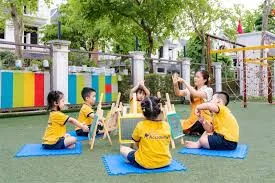
Third-party certifications are your most reliable tool for cutting through greenwashing. They verify that a brand adheres to strict standards. Here are the key ones to look for:
- GOTS (Global Organic Textile Standard): This is the leading and most comprehensive certification for organic fibres. GOTS-certified clothing means that at least 95% of the material is certified organic, and it scrutinizes the entire supply chain. It prohibits the use of toxic chemicals, chlorine bleach, and heavy metals. Crucially, it also includes strict social criteria, ensuring fair wages and safe working conditions for everyone involved. If you see only one label, look for GOTS.
- OEKO-TEX® Standard 100: This certification focuses on health and safety. If a garment carries the OEKO-TEX® Standard 100 label, it means every single component—from the thread to the buttons to the dye—has been tested and found to be free from a long list of over 100 substances known to be harmful to human health. This is an excellent assurance that the clothing is safe for your child’s skin.
- Fair Trade Certified™: This certification is all about people. The Fair Trade seal ensures that the farmers and workers who produced the garment received a fair wage for their work and operate in safe conditions. It empowers communities by providing a “Fair Trade Premium,” an additional sum of money that workers can invest in community development projects like schools, healthcare, or clean water.
- B Corp Certification: This is a holistic business certification. B Corps are legally required to consider the impact of their decisions on their workers, customers, suppliers, community, and the environment. It signifies that the company as a whole meets high standards of social and environmental performance, accountability, and transparency. A kids’ clothing brand that is a Certified B Corp is demonstrating a deep, company-wide commitment to being a force for good.
By familiarizing yourself with these materials and certifications, you can shop with confidence, knowing you are making an informed choice that aligns with your values.
Part 3: Building a Sustainable Wardrobe for Your Child
Embracing sustainable fashion doesn’t mean you need to immediately replace your child’s entire wardrobe. It’s about adopting a more mindful and intentional approach to acquiring, caring for, and passing on clothing. Here’s how to do it practically and affordably.
The “Less is More” Philosophy
The most sustainable garment is the one you already own, and the second most sustainable is the one you don’t need to buy. Shifting away from a culture of excess is the first step.
- Embrace the Capsule Wardrobe: A capsule wardrobe for a child is a small, curated collection of high-quality, versatile items that can be easily mixed and matched. Instead of a closet overflowing with impulse buys, you have a functional set of clothes that covers all their needs. A simple toddler capsule might include:
- 5-7 tops (a mix of short and long-sleeved)
- 3-4 bottoms (trousers, leggings, shorts)
- 1-2 dresses or dungarees
- 2 sweaters or cardigans
- 1 waterproof/warm jacket The key is choosing neutral, complementary colours for the core items and adding personality with a few patterned pieces or colourful accessories. This simplifies laundry, reduces morning decision-making, and ensures every item gets worn frequently.
- Invest in Quality Over Quantity: This is the cornerstone of sustainable fashion. A well-made organic cotton t-shirt might cost more upfront than a fast-fashion alternative, but its value is realized over time. It will withstand more washes without pilling or losing its shape, it won’t irritate your child’s skin, and it will still be in excellent condition to be passed down to a younger sibling, cousin, or friend. Think of it not as a cost, but as an investment in durability and health.
Shopping Smarter and More Creatively
- The Power of Secondhand: The pre-loved market is booming and is one of the most sustainable ways to shop. Children grow so quickly that secondhand items are often in near-perfect condition.
- Local: Explore local consignment stores, thrift shops, and parent-and-child markets.
- Online: Websites and apps like Kidizen, ThredUP, and even Facebook Marketplace are treasure troves for high-quality, pre-loved kids’ clothing from trusted brands.
- Clothing Swaps: Organize a clothing swap with friends, neighbours, or parents from your child’s school. It’s a fun, free, and community-building way to refresh everyone’s wardrobe.
- Support Truly Sustainable Brands: When you do buy new, direct your money towards brands that are transparent about their practices. Look for companies that proudly display their certifications, share information about their factories, use sustainable materials, and have a clear mission statement. Many small, independent brands are leading the charge in this space.
- Consider Renting: For special occasions like weddings or photo shoots, or even just to try out a brand, consider clothing rental services. Companies like Rent-a-Romper or Everafter offer a rotating closet of beautiful, high-quality kids’ clothes for a monthly fee or a one-time rental. This provides variety without the waste and clutter of ownership.
Extending the Life of Clothes
Your responsibility doesn’t end at the checkout. Proper care can dramatically extend the lifespan of any garment.
- Wash with Care:
- Wash Less: Unless a piece is visibly dirty, it doesn’t need to be washed after every single wear.
- Use Cold Water: Washing in cold water uses significantly less energy and is gentler on fibres, helping to preserve colour and shape.
- Choose Eco-Friendly Detergents: Opt for plant-based, biodegradable detergents that are free from harsh chemicals and synthetic fragrances.
- Line Dry: Tumble dryers are energy-intensive and cause wear and tear on fabrics. Line drying is free, gentle, and leaves clothes smelling fresh.
- Mend and Repair: Revive the lost art of mending! A small hole in a knee or a lost button is not a death sentence for a garment. Learning a few simple stitches can save countless items from the bin. Frame it as a fun activity: use colourful, visible patches to add character to a pair of trousers. This teaches children a valuable lesson about resourcefulness and valuing their belongings.
Part 4: The Ripple Effect – How Your Choices Shape the Future
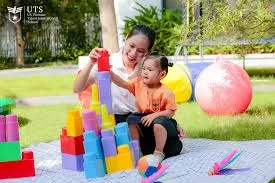
Choosing a sustainably-made organic cotton sleeper over a conventional one might feel like a small act. But when multiplied across thousands of parents, these individual choices create a powerful wave of change that has far-reaching effects.
Educating the Next Generation of Conscious Consumers
The most profound impact of embracing sustainable fashion is the lesson it imparts to our children. By involving them in the process, we are planting the seeds of conscious consumerism that will last a lifetime.
- Tell the Story: Explain to them, in age-appropriate terms, why you choose certain clothes. “We’re buying this shirt from a company that pays its workers fairly so they can take care of their families,” or “This sweater is made from old plastic bottles, which helps keep our oceans clean.”
- Involve Them in Care: Let them help you hang clothes on the line or choose a fun patch to mend a hole in their favourite jeans. This builds a sense of ownership and respect for their belongings.
- Practice Gratitude and Generosity: When they outgrow their clothes, have them help you sort them for donation or for passing on to a younger friend. This teaches them about circularity and the joy of sharing.
Driving Industry-Wide Change
Consumer demand is the single most powerful force for change in the fashion industry. Every time you purchase a GOTS-certified product, you are casting a vote for a better system. You are telling brands and retailers that you value transparency, environmental stewardship, and human rights. As more parents demand these standards, more brands will be forced to adapt their supply chains to meet that demand. This collective pressure can shift entire industries, moving them away from a model of exploitation and towards one of regeneration and respect.
Imagining the Future of Kids’ Fashion
The sustainable fashion movement is constantly innovating. The future promises even more exciting developments:
- Bio-Fabrics: Scientists are developing fabrics from sources like mushrooms, orange fibres, and algae.
- Digital Passports: Imagine scanning a QR code on a garment and instantly seeing its entire journey—from the farm where the cotton was
Conclusion: Weaving a Better World, One Garment at a Time
The journey into sustainable kids’ fashion is not about achieving perfection. It’s not about guilt or judgment. It is about progress. It’s about making one better choice, then another. It’s about asking questions, seeking transparency, and using your purchasing power to support a vision of the world you want your children to inherit.
Dressing our children is a fundamental act of care. By extending that care to the planet and its people, we transform a daily routine into a meaningful statement. We teach our children that their clothes are more than just fabric—they are a connection to the earth, a story of human hands, and an opportunity to make a positive impact. By choosing clothes that are gentle on their skin and gentle on the planet, we are doing more than just building a wardrobe; we are weaving the fabric of a brighter, healthier, and more compassionate future.
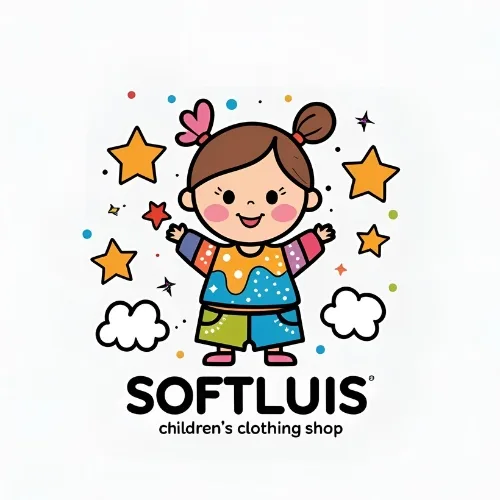
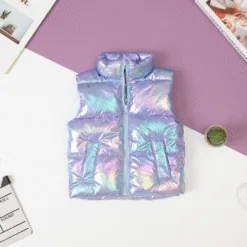 Boys and girls solid color vest, large size 8/14 years old
Boys and girls solid color vest, large size 8/14 years old 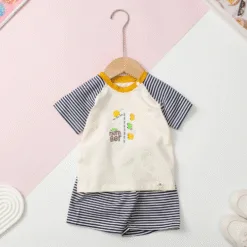 H546 Newborn set-SS01_ 9/36m printed
H546 Newborn set-SS01_ 9/36m printed 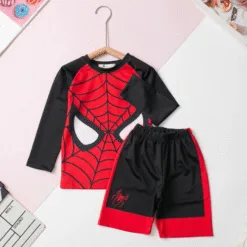 H549 Children's swimwear - SW01_2/12 BT
H549 Children's swimwear - SW01_2/12 BT 